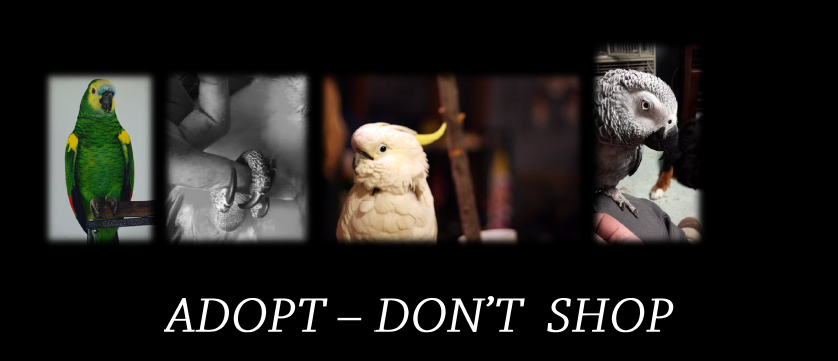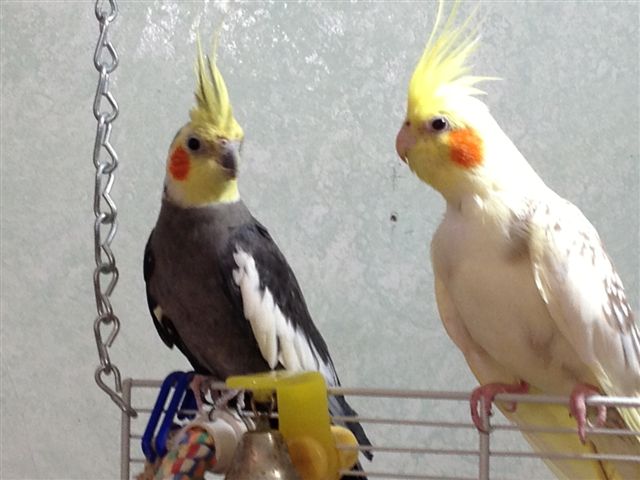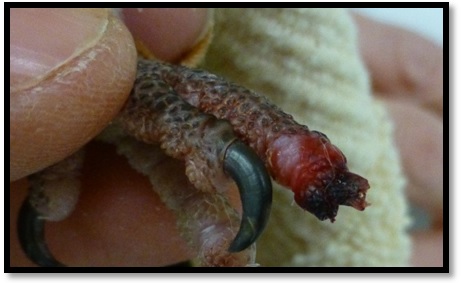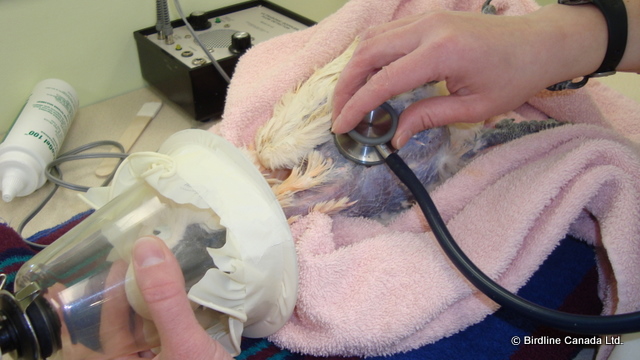Keeping multiple parrots.
The following outlines important factors for maintaining a healthy flock.
By Leticia Materi, PhD DVM Calgary Avian and Exotic Pet Clinic
Quarantine
A proper quarantine protocol is the most important step to prevent spread of disease in any animal collection. Its purpose is to allow sufficient time for newly acquired birds to exhibit clinical signs of disease and to prevent transmission of disease to other birds. It is important to develop and strictly adhere to a basic quarantine policy for any new bird entering the flock. During this quarantine period, the bird should be examined by a veterinarian and any identified problems should be corrected.
It should be noted that many avian infectious diseases involve a carrier state (i.e., beak and feather disease virus, polyomavirus, Pacheco’s disease virus) and that quarantine alone is insufficient to ensure that one of these diseases is not introduced to a home.
Having a quarantine area for new additions in a separate building or room is the most ideal situation. This room should be serviced at the end of the day, with no return to the main collection that day. Thus, new birds or sick birds should be fed and cleaned last. All materials used to maintain this area (i.e., food dishes, cleaning supplies) should remain in this location to reduce the chance of cross contamination. A minimum of 90 days of quarantine is recommended for all birds new to the collection. This will help identify and prevent the spread of various diseases. Any sick birds should be immediately removed from the main collection and isolated prior to veterinary inspection. Both new additions and rescued birds should undergo quarantine procedures.
While in quarantine, it is important to monitor individual birds for consistent feeding, dropping production, body weight, and any evidence of problems such as respiratory distress, diarrhea, and weight loss. Record keeping, especially of body weight, during this stage will help identify animals that are doing poorly.
All new additions should be visually inspected for signs of illness (i.e., discharge from the eyes or nose), trauma, or external parasites such as mites.
On occasion, you may find sick birds in your collection. It is important to plan and be prepared to quarantine these animals. This area should be separate from the main collection and new additions. Since most birds tend not to show outward signs of illness until the disease is advanced, it is strongly recommended that you contact a veterinarian if you observe signs of illness to give the animal the best chance to recover.
Use a lab coat or zip-up sweater and slip on shoes in the quarantine space and keep them in these areas. This will also reduce the chance that disease will be spread to the remainder of the collection. Washing hands or using a hand sanitizer gel between animals will help prevent spread of disease.
Housing
Since the overall health of any animal is dependent upon the conditions of the environment in which it is housed, it is important that the appropriate housing conditions be maintained.
When planning proper housing, ensure that they are easy to clean and constructed of durable, nontoxic material. The following lists some things to consider when constructing enclosures:
- Avoid multiple crevices and hard to clean areas
- Avoid stacked perches that result in fouling of the lower perch
- Do not place perches over food/water dishes to prevent droppings from contaminating them
- Avoid galvanized metals/wire (lead/zinc toxicity)
- Avoid internal hooks, sharp objects or sharp edges
- Avoid fine, easily chewable mesh construction
Cleaning and Disinfection
The major cause of disease spread in any animal collection is poor cleaning practices.
When considering sanitation, it is important to distinguish between cleaning and disinfecting. Cleaning occurs when organic debris (such as food or feces) is physically removed using hot water and detergents. After cleaning, a good rinse with fresh water is then performed. Only when all organic material is removed can disinfection be successful. Ideally, items can be soaked for 15 to 30 minutes in a container of disinfectant such as dilute bleach (1 part bleach in 30 parts water). Disinfectants should be thoroughly rinsed to prevent the birds from contacting residual compounds.
Be sure to avoid toxic disinfectants such as phenols. These are chemicals that are spelled with ‘-ol’ at the end (i.e., dettol, Pinesol, Lysol, etc.).
One method to reduce contamination between enclosures is to use two sets of dishes. When birds are being fed, dirty dishes can be collected and replaced with clean dishes full of food or water. Keep the dirty dishes away from the clean ones as you change them. Ensure that all dishes in the environment are protected from overhead perches and, thus, fecal contamination.
Preventative Health
While it may be time consuming, standard record keeping of the weight, appetite, and fecal output of each animal are objective measures of health.
Routine bloodwork can help aid in the detection of disease and would be recommended for all new additions. It is recommended that new additions are vet checked prior to introduction to the main flock. Further testing recommended may vary depending on the species, health status, and individual history of the bird but may include fecal gram stains, radiographs (x-rays), and viral screens.
Should a sudden death occur in your collection, strongly consider having a necropsy performed on the deceased animal. A necropsy is an autopsy of an animal and can be one of the most valuable methods for monitoring the health status of birds in a collection. It often yields information on infectious diseases, metabolic diseases, nutrition, and husbandry-related issues that may have contributed to the death. This would obviously have profound implications for the surviving, in-contact animals. If a bird passes away at a time when you are unable to take the remains to a veterinary clinic, wrap the body in moist paper towels, place in a plastic bag, and store in a refrigerator. Do not put the body in the freezer as this will interfere with the necropsy results.





